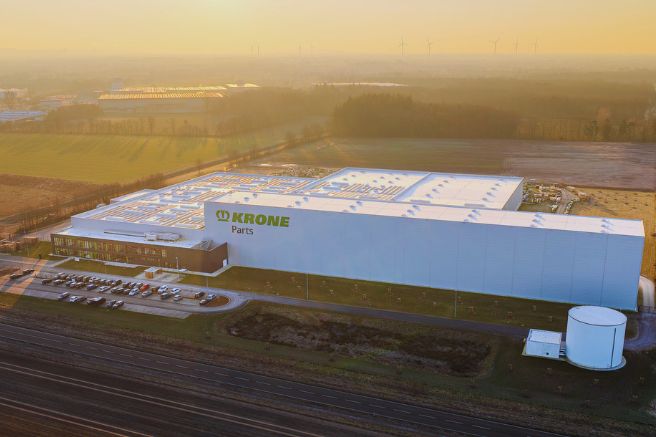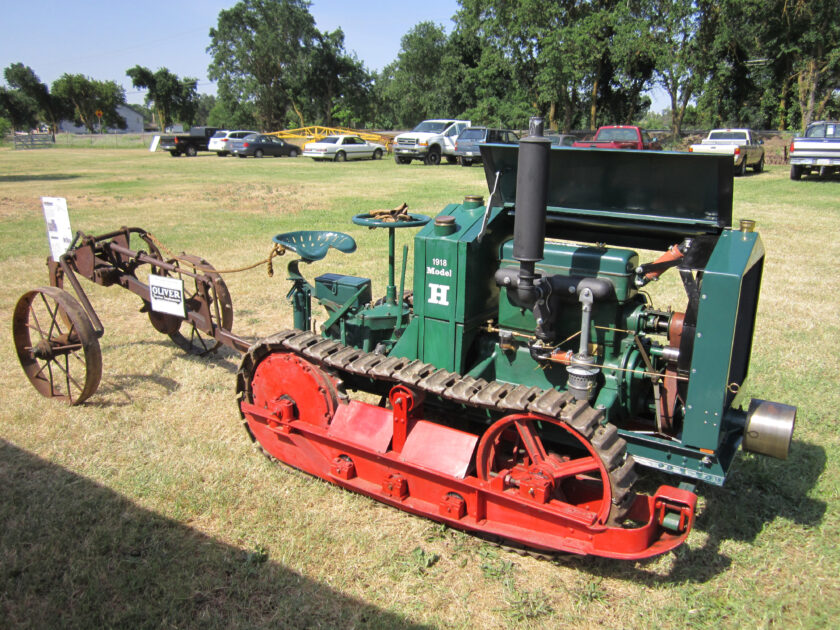
When you think of tracked tractors, Italian manufacturers come to mind, undisputed world leaders since the middle of the last century. Fiat, Lamborghini, Landini and Same. But it wasn’t always like this. In fact, at the beginning of the twentieth century, several German, English, French and above all American manufacturers proposed tracked tractors and in this context, a special mention goes to the American brand “Cletrac”. Its history began in the United States, in 1866, when Thomas H. White together with his five children founded a company called White Sewing Machine Company in Cleveland, Ohio. It was born to produce sewing machines, but then it also started building bicycles, assembling 10,000 bicycles a year in 1899.
In 1912 two of his sons, Clarence and Rollin H. White, then founded the Cleveland Motor Plow Company, a company whose intention was to design and build a revolutionary motor plow for those times. He did so, but it was not as successful as hoped and production was limited to a few prototypes and a few pre-series. At the beginning of 1914, however, Rollin took it into his head to mechanize a pineapple plantation owned by a brother located in the Hawaiian Islands and for this reason he began to hypothesize the creation of a compact vehicle, capable of moving with agility between the narrow rows of crops and not to sink into the often wet soil. In fact, a small caterpillar tractor, the same one that saw the light in 1916 with the Cleveland brand and the initials “R”, a vehicle that can be considered one of the first compact crawlers in history. It was only 127 centimeters wide, weighed 11 quintals and was powered by a Buda brand four-cylinder petrol engine which provided 18 horsepower at the pulley and ten at the bar. To direct it, an original steering system was designed which acted on the differential via the steering wheel, slowing down one rear axle shaft and consequently accelerating the other, which gave rise to changes in trajectory.
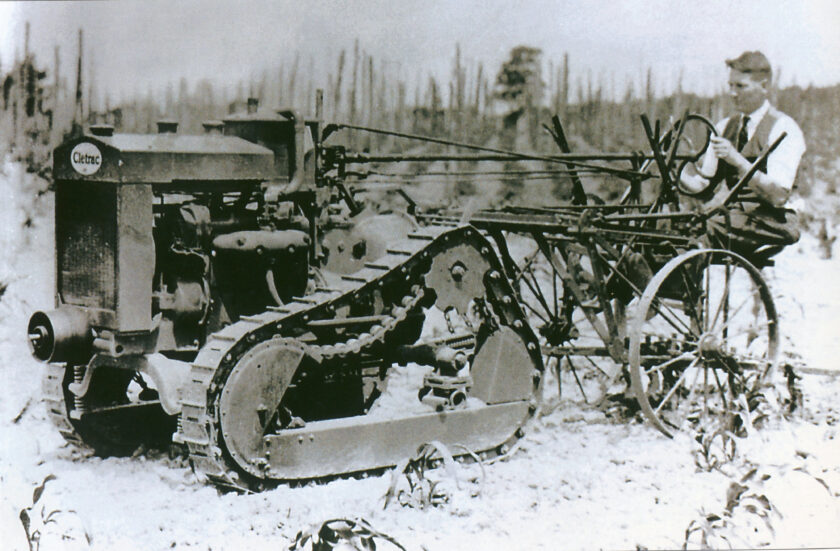
To mass produce it, the Cleveland Tractor Company was founded and put the machine on the market at a price of one thousand and 185 dollars to facilitate its success. This was not lacking and in 1917 he pushed the company to update the tractor giving life to the “H” model, very similar to the “R” but a little heavier, 14 and a half quintals, and powered by a 20 horsepower four-cylinder Weidley to the pulley and 12 to the bar. “H” also inaugurated the Cletrac brand, an abbreviation of Cleveland Tractor which from that moment on all the tracked vehicles of the company including the “W” model in 1919, almost identical to “H” but weighing a quintal more and driven by a original Cletrac engine with the same power as the Weidley engine. It was built until 1932, but starting from 1920, it was joined by other tracked tractors, the first was the revolutionary “F” model, a supercompact with adjustable widths from 813 to 109 centimeters and modular height to adapt to any type of system . The tracks were also triangular in shape with a double link system which guaranteed high smoothness on the track tensioner wheel while also acting as a support system in place of the rollers.
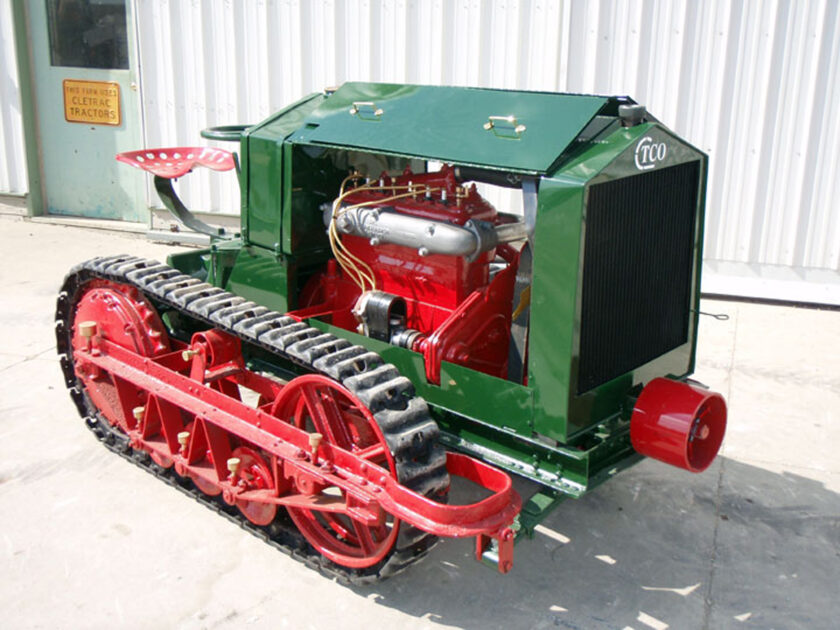
The engine was a four-cylinder Cletrac that delivered 16 horsepower at the pulley and nine at the bar and the vehicle weighed only nine quintals. Among its particularities was the fact that it could be driven not only in the traditional way but also from the tool like a workhorse using special extensions of the steering wheel, accelerator, clutch and brakes. In 1925 the “20 K” model made its appearance, a powerful and relatively heavy crawler powered by a Cletrac petrol engine, a four-litre, 300 cubic centimeter four-cylinder engine delivering 27 horsepower at the pulley and 20 at the drawbar. It was 267 centimeters long, 123 centimeters wide and weighed 22 quintals, a mass later surpassed in 1931 by the “15” model weighing over 26 quintals and powered by a Hercules engine.
The debut of diesels in 1933
In 1933 the company decided to use diesel engines in addition to its petrol engines, a cycle that debuted with six cylinders, the most powerful of which reached 90 horsepower. The new machines expanded a range characterized by a high level of innovation, but did not prevent the Cletrac brand from being absorbed by the Oliver group in 1944, which continued to profitably produce all the machines. Among these, the “Hg” model with 18 horsepower at the pulley stood out, which went into production in 1939 and was produced in almost 30 thousand units until 1957 thanks to its good performance and a price of around two thousand dollars. The epilogue of the brand in the early 1960s. Ironically, it happened that the White Motor Company group owned by the White family, the same one that created the Cletrac brand, and specialized in the production of cars and trucks, absorbed Oliver, creating the “White Farm Equipment” division which decided to cease the production of tracked vehicles in 1963 to market traditional tractors produced by the Agco group until 2001 and garden tractors built by the Mtd group until 2006.
Tracked, compact and English
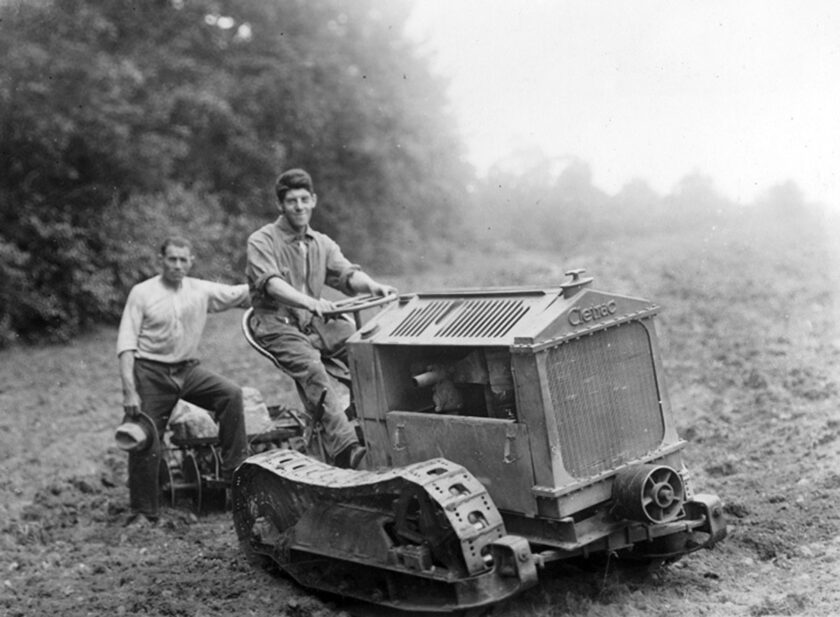
Benyamin Holt, founder of the current Caterpillar group together with Daniel Best. He presented the first tracked agricultural tractor in 1908, based on an English patent. However, it was from England that a concrete response to the American competitor came from the Clayton & Shuttleworth company of Lincoln, Lincolnshire. Founded in 1842 and becoming famous thanks to its excellent locomotives and road locomotives, it presented its first tractor in 1911, a beast powered by an 80 horsepower petrol engine designed primarily for ploughing. The machine laid the foundations for a second tractor, still tracked but multi-purpose which saw the light in 1916 and was simply called “Clayton”. It looked incredibly modern for its time apart from the presence of one or two cylindrical tanks above the bonnet which ruined its shape.
The engine was a 35 horsepower four-cylinder Dorman running on oil with petrol ignition and the steering clutches, controlled by a steering wheel, were “open-air”, in the sense that they were not housed inside the transmission but externally, dangerously in contact with the driver. The ribs of the soles had a semicircular design that betrayed a promiscuous use, making them discreet in the field but perfect on dirt roads for towing military vehicles or aircraft. In fact, the English Government ordered several of them for “state ploughing” or for war use, orders which contributed to making ours the first European agricultural crawler that enjoyed a certain success. The English company continued to build caterpillar tractors until 1928, then, due to the Great Depression, it went into crisis and was absorbed by Marshall, Sons & Co, of Gainsborough, another English company.
Title: The Cletrac brand: tracked, compact and american
Author: Massimo Misley
Translation with Google







